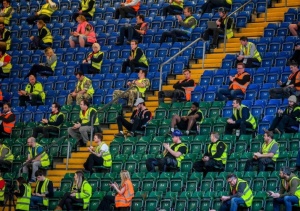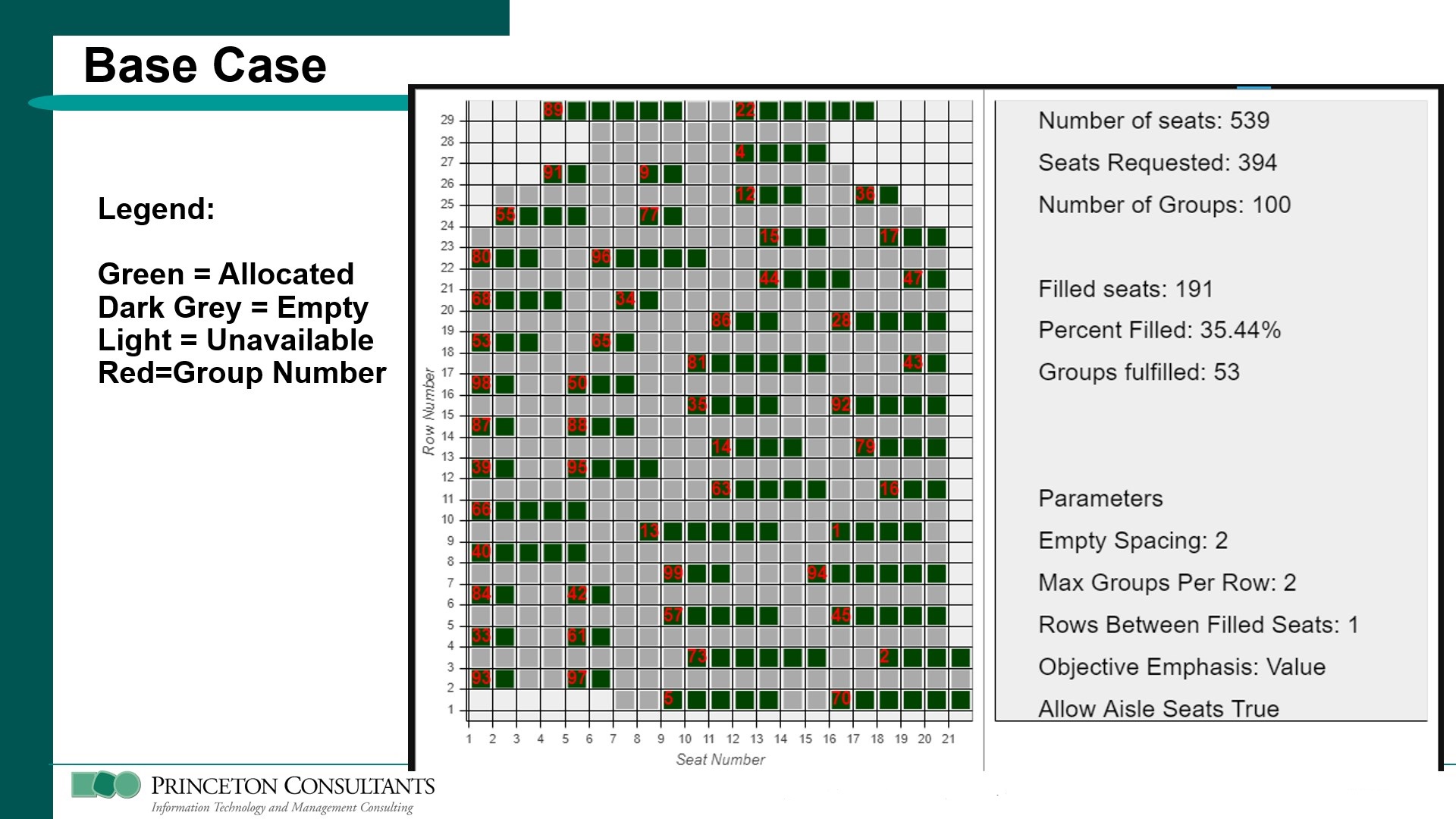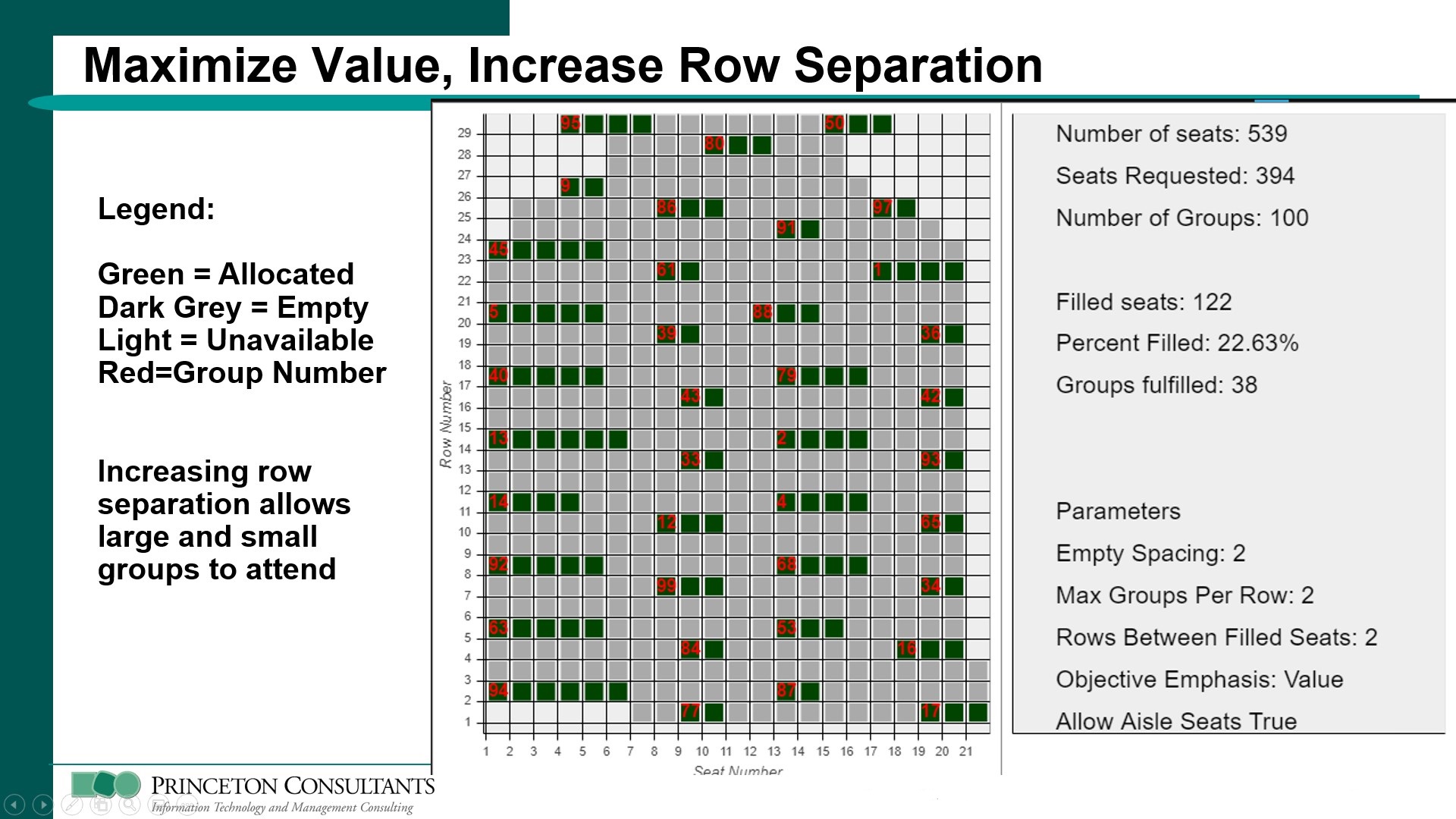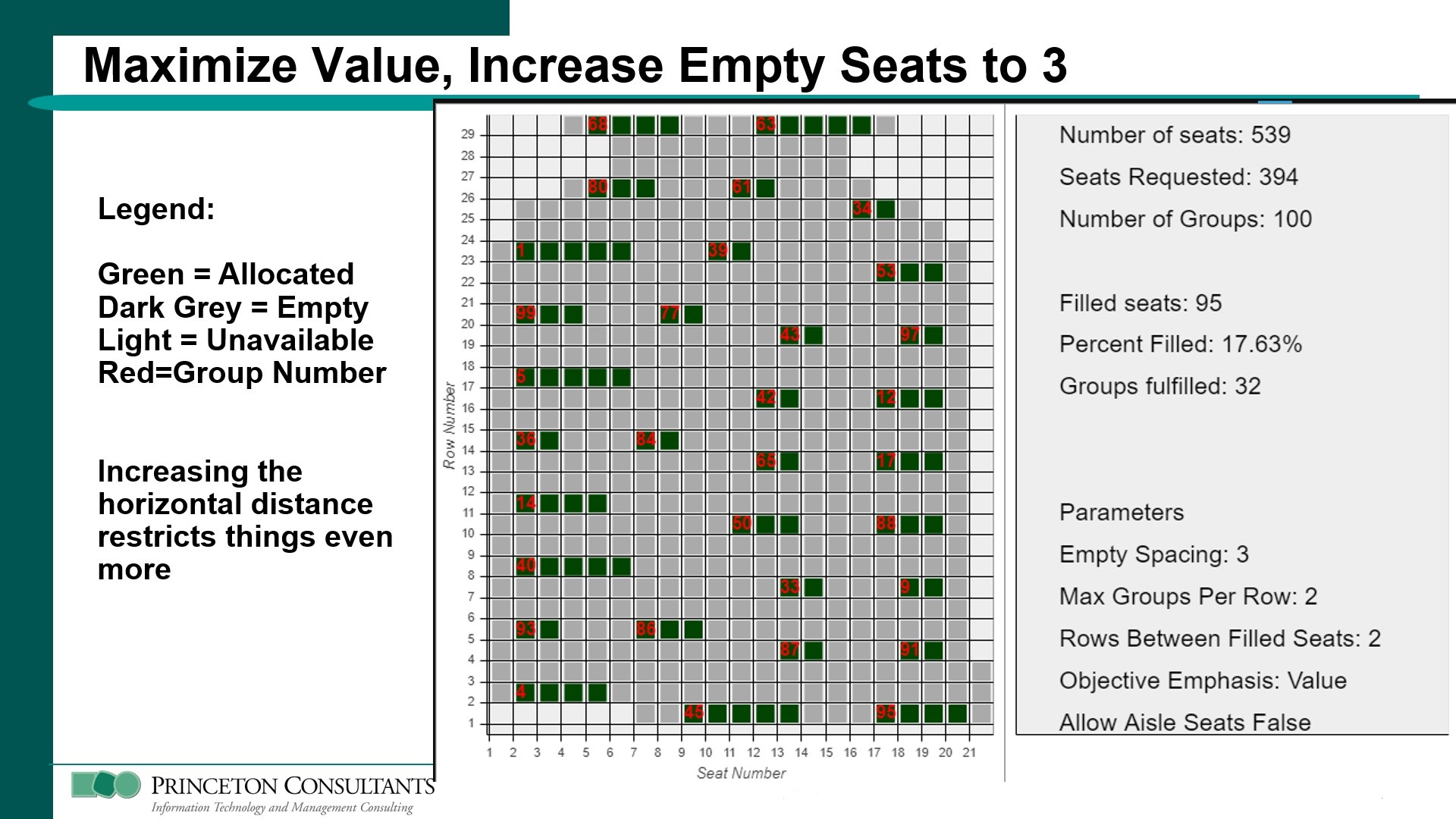
Soon there will be sports and entertainment returning to arenas and stadiums, hopefully with fans in attendance. As regulations are established and subsequently altered and as social distancing standards at large public events evolve, the managers of these venues will face understandably difficult challenges.
The main short-term problem is to determine where people can be seated in the venue while observing safe social distancing practices. One size can’t fit all: each venue has its own seating chart, season ticket holder population, and other important considerations.
Most people do not attend professional or college sporting events or concerts alone. We can assume for the most part that a family or group of friends who have quarantined together will want to sit next to each other and refrain from distancing—otherwise they will not pay to attend. The size of these groups will vary. Season ticket holders, which account for 70%-80% of attendees of NFL and NBA games, will be prioritized—some more than others based on their relationship with their favorite team.
How can venue managers test various seating policies to choose what is best at the time? What should be the number of seats between groups, and how will they be positioned? What should be the number of empty rows between groups? Should aisle seats be allowed?
These questions and others can be answered through mathematical optimization. Princeton Consultants has built a proof-of-concept to illustrate what is possible. We used a seating diagram for one section in an NBA arena as a test case. This section has rows of different length due to the configuration of the arena. We assumed there were 100 groups of fans holding season tickets in that section, and each group had 2 to 6 people in it. Each group was given a “score” that represents its value to the team based on how long the group has been a season ticket holder or on other business factors.
In our base case scenario, we allowed aisle seats, required at least 2 empty seats between groups, a maximum of two groups per row, and one empty row between groups sitting in front of each other, maximizing the total value of the groups. 53 of the groups could be accommodated, and the solution picked a nice mixture of groups of different sizes.

As an alternative, we increased the front-to-back spacing to require two empty rows between people sitting behind each other. Note how the larger groups were placed near the aisles.

A third alternative is to increase the number of empty seats between adjacent groups to 3, and disallow people sitting on the aisle:

It is worth noting how the solution keeps high value groups in the seating arrangement, where possible. In our sample data, group 13 has 6 people and has the highest value to the organization among all groups of size 6. In the first solution, group 13 is placed in row 9, and in the second solution, group 13 is placed in row 14. In the third solution, no groups of size 6 are chosen because there is more value in taking a few groups with a lower value and smaller size than use up space with a group of 6 that prevents other groups from being included. The optimization solution balances the tradeoff between spacing of the groups and the value of the groups included in the solution.
This prototype demonstrates that various social distancing policies can be rigorously analyzed. A customized model could be used to help sell tickets in sections without season ticket holders: venue managers would select group sizes and the number of bundles of each group size.
Mathematical optimization models like this are high-value decision support tools because they provide quantitatively driven answers to important business questions—replacing traditional decision-making by rules of thumb, gut, and boardroom polling. As regulations and conditions change, executives can change their inputs into the model to assess the impacts of different policies. Safe socially distant seating at stadiums and arenas in the coming months represents an urgent business issue that demands the thorough analysis that optimization provides.
Princeton Consultants, www.princetonoptimization.com, welcomes conversations with venue managers, professional sports teams, and universities to explore if a customized safe-seating optimization model is right for a facility and their business. In this COVID-19 environment, we are available for prompt discussions and rapid development. Our firm has a 30-year track record in building and deploying optimization solutions for leaders in many industries.
Contact us to set up a call soon.
